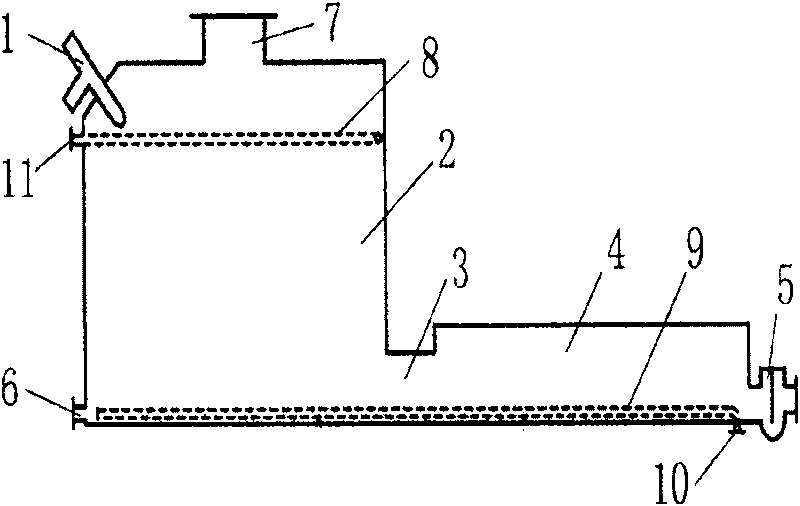Method for removing solvent from chlorinated polyvinyl chloride solution
A chlorinated polyvinyl chloride and solvent removal technology, which is applied in the field of polymer material production, can solve the problems that have not been discovered, that the surfactant cannot be removed from the resin, and the unit consumption of solvents is increased.
- Summary
- Abstract
- Description
- Claims
- Application Information
AI Technical Summary
Problems solved by technology
Method used
Image
Examples
Embodiment 1
[0017] The chlorinated polyvinyl chloride chlorinated liquid containing 85wt% of chlorobenzene is sprayed into the gasification chamber 2 after being atomized by the air-flow atomizing nozzle of the atomizer 1, and the velocity of the water vapor at the nozzle outlet is 127m / s, and the water vapor and the chlorine The mass ratio of the chemical liquid is 2:1, and the temperature of the gasification chamber 2 is 98°C. The chlorobenzene in the atomized chlorinated liquid droplets evaporates in a large amount in the gas phase of the gasification chamber, and the solidified resin particles formed fall into the hot water with a temperature of 98-99°C flowing horizontally at the bottom of the gasification chamber 2; the hot water and The resin carried by it flows out of the gasification chamber 2 and enters the stripping chamber 4, where it is in cross-flow contact with the stripping water vapor, and the cross-flow stripping time is 30s. Measured by gas chromatography, the content o...
PUM
 Login to View More
Login to View More Abstract
Description
Claims
Application Information
 Login to View More
Login to View More - R&D
- Intellectual Property
- Life Sciences
- Materials
- Tech Scout
- Unparalleled Data Quality
- Higher Quality Content
- 60% Fewer Hallucinations
Browse by: Latest US Patents, China's latest patents, Technical Efficacy Thesaurus, Application Domain, Technology Topic, Popular Technical Reports.
© 2025 PatSnap. All rights reserved.Legal|Privacy policy|Modern Slavery Act Transparency Statement|Sitemap|About US| Contact US: help@patsnap.com

